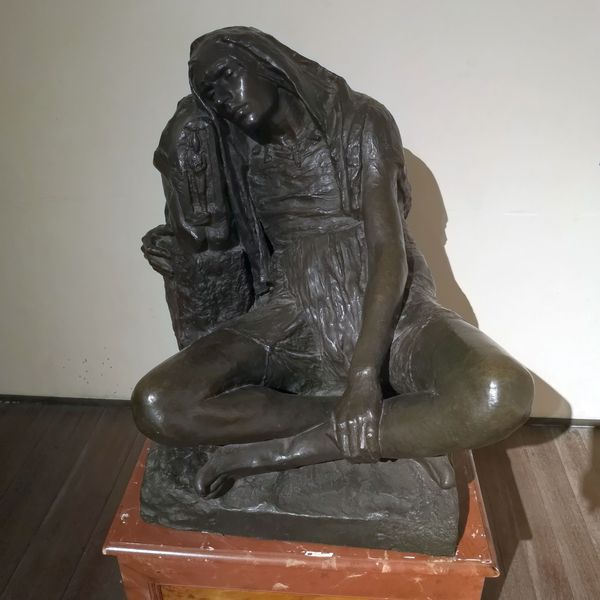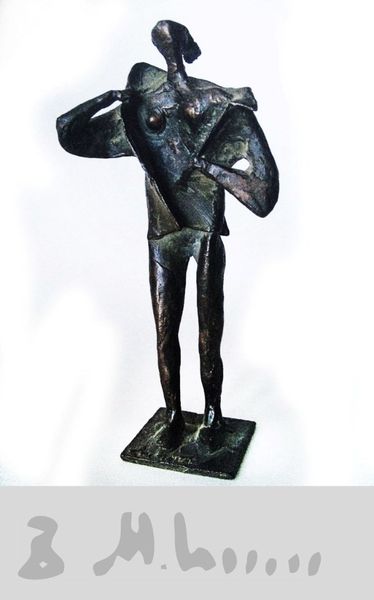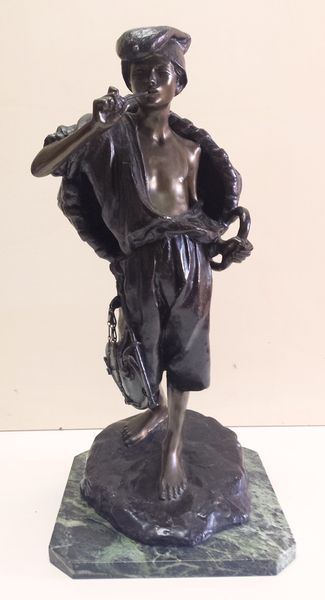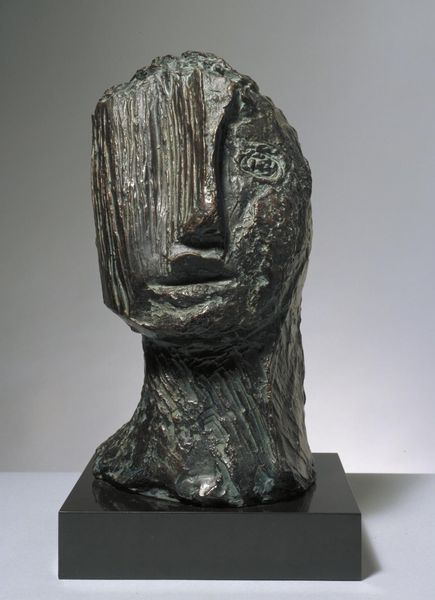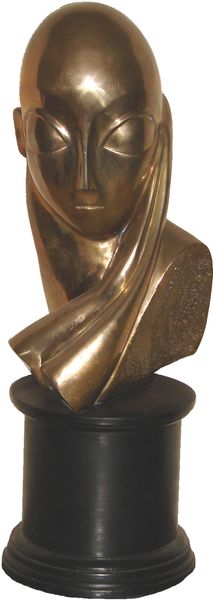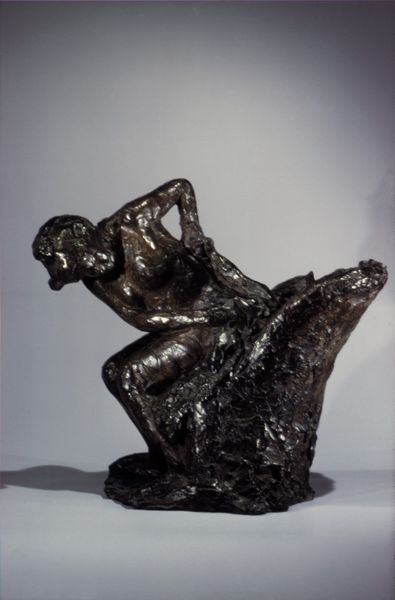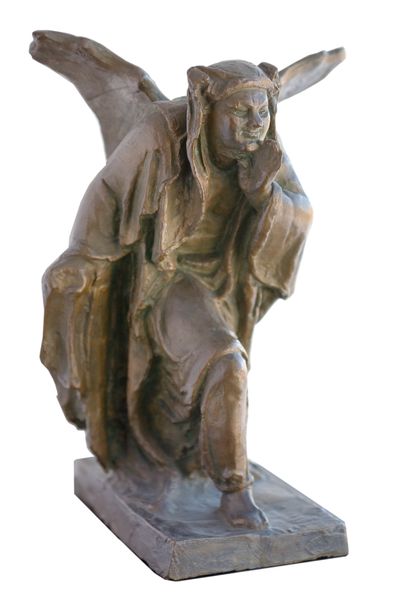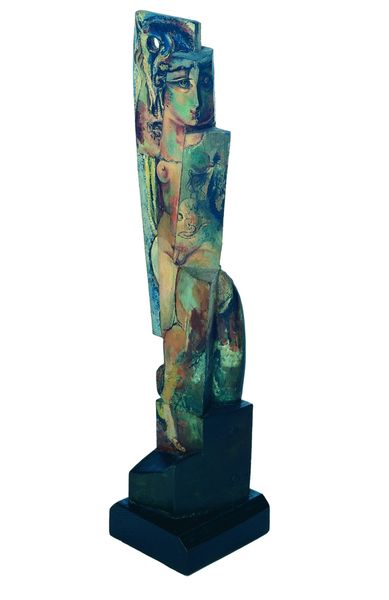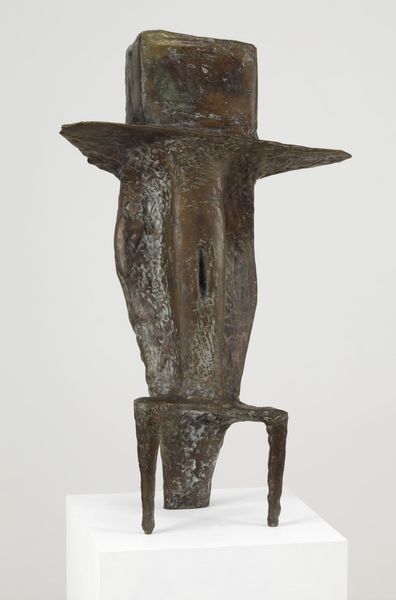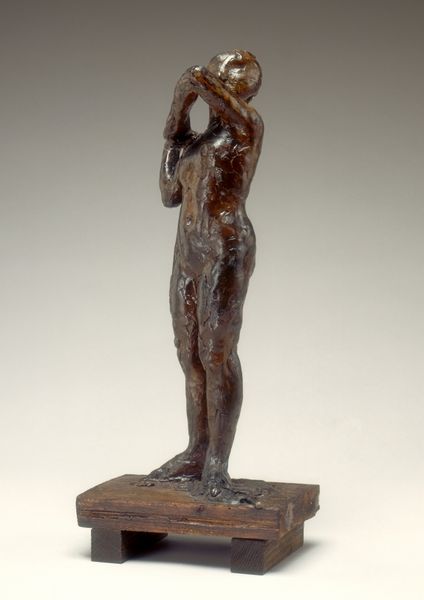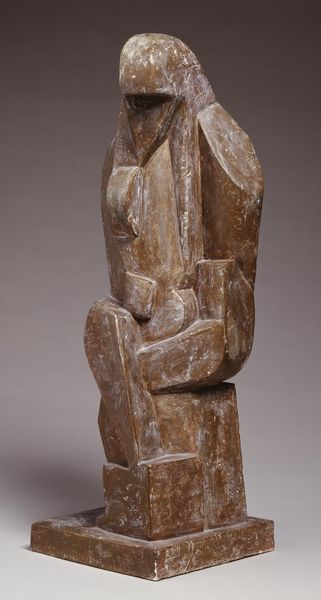
bronze, sculpture
#
portrait
#
sculpture
#
bronze
#
figuration
#
sculpture
Copyright: Public domain
Curator: Before us stands Achille D'Orsi's bronze sculpture of Don Basilio from the Barber of Seville. Editor: My immediate impression is one of humility, maybe even subservience. He appears almost… shrinking into himself. Curator: Indeed, there’s a palpable sense of constraint in the figure. The downturned gaze, the clasped hands… it speaks to a certain societal role, doesn't it? We should consider how D’Orsi, a master of bronze, has used the inherent weight of the material to communicate status and perhaps comment on class structure. The bronze itself suggests permanence and value. What societal dynamics are being reflected through the lens of this character? Editor: It's fascinating how the artist uses the malleability of bronze to capture such nuanced emotional states. Consider the labor involved in bringing forth the mold, refining the textures to elicit feelings from such an otherwise static work. Yet, let's not overlook the theatrical roots of Don Basilio as a character. The costume, including that slightly absurd hat, serves not just as identification but as performance, hinting at the ways individuals must "perform" within societal roles, almost creating a parody of social obligation. Curator: Excellent point! Basilio is always "on stage," even when he thinks he's in the wings. So what do you think D’Orsi aims to reflect or question through this presentation? The sheen on the bronze contrasts with Basilio's subdued demeanor, an indicator perhaps of the duplicity innate in the operatic role, where appearances are constantly deceiving, much like in political structures or the class disparities of his time. Editor: It suggests D’Orsi was less interested in glorifying a figure and more invested in capturing something more resonant: the subtle anxieties of being both visible and powerless. Looking closely at this bronze, one sees layers beyond simple representation. It embodies the ongoing drama of negotiating identity against imposed social realities, while cleverly working with the material properties of the cast bronze itself. Curator: That’s a profoundly insightful perspective. Examining D'Orsi’s bronze casting within its broader artistic and societal context really deepens one's appreciation. Editor: And seeing the artwork not just as a display of craftsmanship, but also a point for dialogue about society, broadens art appreciation itself.
Comments
No comments
Be the first to comment and join the conversation on the ultimate creative platform.
